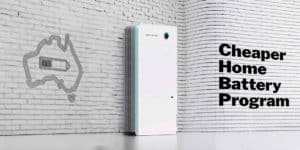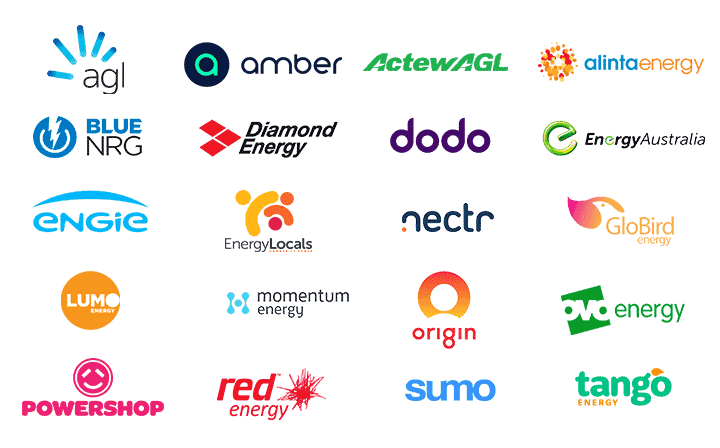 Looking to find which energy retailer has the best solar feed-in tariff in SA? You’ve come to the right place. Every week, WATTever reviews the publicly-listed electricity plans on every SA energy retailer’s website. We want to make it easy for you to compare. So, to make it easy for you to compare, the table below contains a ranking of minimum and maximum solar feed-in tariffs offered by energy retailers in SA. Plus, the all-important FIT conditions. That’s because this can be the difference between a good deal and a dud.
Looking to find which energy retailer has the best solar feed-in tariff in SA? You’ve come to the right place. Every week, WATTever reviews the publicly-listed electricity plans on every SA energy retailer’s website. We want to make it easy for you to compare. So, to make it easy for you to compare, the table below contains a ranking of minimum and maximum solar feed-in tariffs offered by energy retailers in SA. Plus, the all-important FIT conditions. That’s because this can be the difference between a good deal and a dud.
Solar feed-in tariffs in SA.
Solar feed-in tariffs (FIT) are the payment made to solar owners for the energy they generate and send back into the grid. With over thirty competing retailers in SA, it pays to shop around. Click on the ‘View’ buttons to see feed-in tariff details for all of the retailer’s plans in the table below.
Solar feed-in tariffs are important, but to find the best deal you must consider usage rates and supply charges. Plans with big feed-in tariffs often come with bigger usage and supply charges. Many solar plans have stepped FiTs and caps too.
WATTever makes it easy to find the plans that will maximise your solar savings. Designed by solar owners for solar owners, WATTever’s comprehensive electricity comparison provides a personalised cost ranking of electricity plans, based on your unique energy use and solar export. We include all retailers, tariff types, discounts, solar feed-in tariffs, solar size eligibility criteria and more.
For extra tips check out our essential guide to comparing electricity for solar owners.
Solar feed-in tariffs for SA households by electricity retailer (cents per kWh exported)
Note: We show minimum and maximum feed-in tariffs (FITs) as some retailers offer different FITs on different plans. Click on the retailer name to view retailer and premium FITs by plan. Residential feed-in tariffs shown exclude GST. GST on feed-in tariffs is only paid to ABN holders.
“Market-linked plans” that have their rates tied directly to the wholesale market spot price are not included in the tables above because these rates vary every day and cannot be compared like-for-like with most plans where the published rate is the rate you pay. To view indicative rates and feed-in tariffs published for market-linked plans, please see WATTever’s rates pages for Amber.
Battery only and Electric Vehicle only plans that require the household to have a battery or EV are not included in the tables above due to the small portion of consumers who qualify for these plans. These plans are still visible on the retailer solar feed-in tariff pages.
Why SA’s biggest feed-in tariff isn’t always the best deal
Some retailers offer energy plans featuring a big feed-in tariff (FIT) to appeal to solar households. This can look like an attractive proposition. However, if your mission is to find the best overall deal, we recommend you look at the bottom line. That’s the plan with the lowest cost for the combination of your home’s solar export and grid electricity import. Here’s what to watch for.
High FIT plans typically come with high grid rates. In situations where a home exports lots of solar and doesn’t buy much from the grid, these can work out well. But homes where solar export is small and with a moderate to high amount of grid energy imported should take care. Inflated grid energy charges on big FIT plans can quickly overshadow the feed-in tariff. Other high FIT plans have conditions that limit the size of eligible systems. Or some only pay the ‘headline’ rate on a small amount of export each day – sinking to a much lower tariff after this. This might be ok if you don’t export much solar or have a smaller system.
There is a sweet spot for many solar owners. This is where a decent feed-in tariff with few or any limits, combines with fair grid rates. While there is no ‘one-size-fits-all’ plan, you’re sure to find a plan that works for your combination of solar export and grid electricity.
How to find the best electricity deal for solar owners
WATTever’s Comparing Solar plans guide, unpacks the essential consideration for solar owners serious about finding the best electricity deal. This includes using a combination of summer and winter bills, or one year’s worth of bills, as the basis for comparison to find the all-around best deal for you.
For extra tips on getting added value from your solar, see WATTever’s free Solar Owners Guide. The Guide includes practical advice to help get the most from your solar set-up. You’ll find strategies on using more of your cheap solar to avoid buying power from the grid. Plus, a rundown on solar monitoring and maintenance.
Why solar feed-in tariffs in SA are falling
There are now over seven hundred thousand small scale solar systems in NSW (<100kW), plus large-scale wind and solar farms. Together they have added an abundance of cheap renewable energy during the day. So it’s no surprise this extra supply has reduced wholesale power prices. Daytime wholesale electricity can often be bought by retailers for a couple of cent or less, per kWh. As a result, it doesn’t make economic sense for retailers to keep paying more to solar owners for electricity when they can buy power for much less in the wholesale market. So that’s why solar feed-in tariffs have been declining.
What can you do now SA solar FITs are lower?
Once you have the right energy plan, an essential strategy for solar owners should be to use as much of their cheap solar as possible. That’s because using energy during the day when your solar is plentiful reduces the need to buy from the grid. So run laundry appliances, dishwashers, or blast the air conditioner when the sun is shining – to keep the home cool into the evening. If you don’t want to shift energy use to when the sun is shining, the other option is to store your solar. This way, you can access your solar when you want it, like in evening, when grid rates step up. You can discover more about adding storage in our Battery Buyers Guide.
Is solar worth it in SA?
Absolutely. Solar still makes sense, even without high feed-in tariffs. That’s because using electricity generated from rooftop solar is cheaper than buying from the grid. The average pay-off time for a PV system in Adelaide, SA is between three to four years (calculated by The Energy Council in August 2021) . Try to find any other tax-free investment that pays for itself in such a short time. Plus, a quality solar PV setup has a life of over twenty years, not to mention the positive impact on the environment.

Cheaper Home Battery Program set to boom
The Federal government’s new $2.3 billion Cheaper Home Batteries Program offers a generous battery discount for Aussie households and small businesses.

Ausgrid Community Battery trial
Over the last 6 months of 2024, Ausgrid has rolled out 19 Community Batteries across parts of Sydney, Newcastle and the Central Coast.

Ausgrid Solar Tax. Annoying, but it’s no apocalypse.
There’s been a fair bit of noise about the so-called “sun tax” that solar households in the Ausgrid network (Sydney/Hunter/Central Coast) will soon be subject to.



